Insect Parasites and Predators
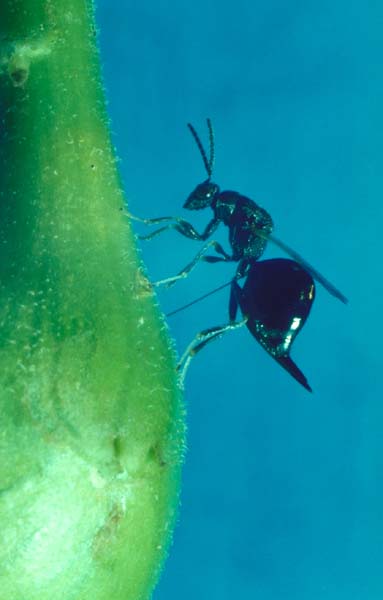
Eurytoma gigantea is a parasitoid wasp (an insect parasite whose larva eventually kills its host) of the gall fly (Eurosta solidaginis). It uses a long ovipositor to pierce the gall and lay its egg in the fly’s chamber. E. gigantea is aherynotokous (females emerge from fertilized eggs males from unfertilized eggs). The success of attack is dependent on the thickness of the gall wall and on the parasitoid’s ovipositor length. Eurytoma gigantea’s attack season extends from the end of June until August (although hardening of the gall wall may end attack by late July). Once hatching takes place, the wasp larva quickly eats the Eurosta larva and continues to feed on gall tissue until pupation. Eurytoma gigantea may use visual host cues when searching for galls and only probe with its ovipositor on gall surfaces. Interestingly, there is a bimodal temporally distinct emergence of E. gigantea wasps. While about 90% of the wasp larva overwinter in the gall, the other 10% emerge in late summer. Researchers have been unable to find an alternate host for the wasp. Even if the late emergers overwinter as adults (outside the gall), they do not attack new galls any earlier the next summer. The fate of these early emergers is unknown.
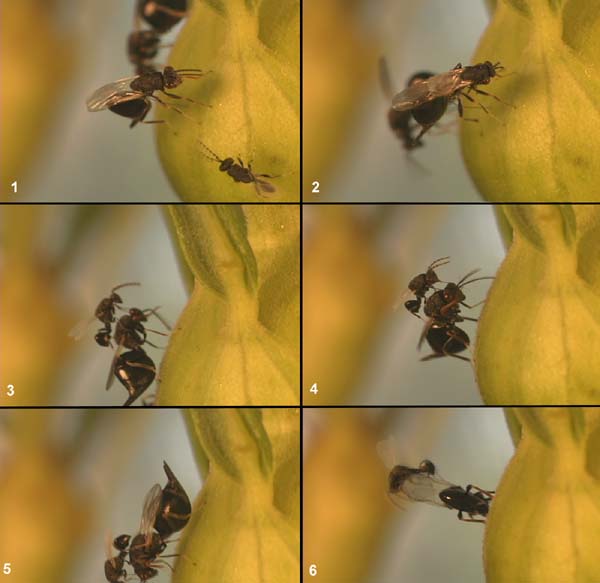
The above sequence of photographs illustrates the courtship behavior of Eurytoma gigantea. Photo 1 shows a small male (lower right of photo) approaching a prospective female mate. He’s in no danger of being eaten like a male spider or praying mantis, as adult Eurytoma feed on nectar from flowers. However, the female is more than three times his size! Photo 2 shows the male jumping onto the female’s back. In Photos 3, 4, and 5, the male is riding on the female’s back while “bopping” her antenna with his own. This appears to be part of their courtship behavior. In the final photo (#6) the male is trying to climb back over the female’s wings to the tip of her abdomen, probably to attempt copulation. The female has begun to insert her ovipositor into the gall and probably not interested in mating. A moment later the male fell off her wings and began searching for another mate.
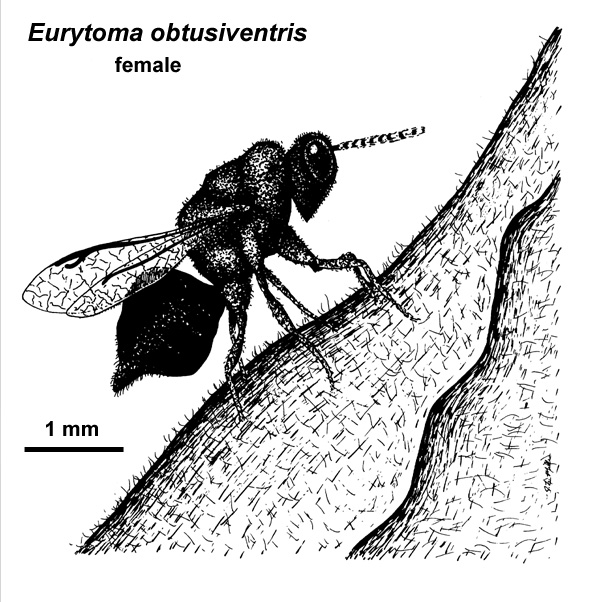
A second species of parasitoid wasp, Eurytoma obtusiventris, which also uses Eurosta as its exclusive host. Eurytoma obtusiventris is thelytokous (parthenogenic females, no males) and oviposits into the host egg or larva while the host is still in the goldenrod bud. The E. obtusiventris larva remains quiescent inside the host larva until autumn. During autumn, the parasitoid induces early pupation in the Eurosta larva and begins its own development. The E. obtusiventris larva overwinters in the usurped gall and then emerges in the early spring, in time to attack newly deposited Eurosta eggs and larvae.
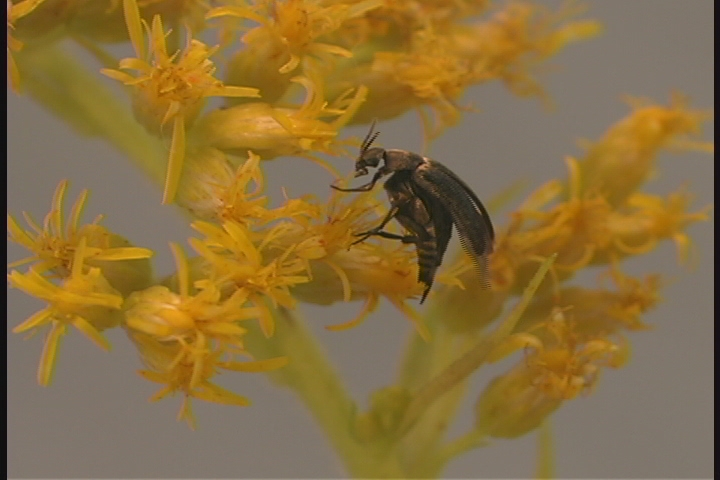
Mordellistena convicta is a stem borer, gall inquiline (animal that lives in the home of another), and predator of Eurosta. Many Mordellistena tunnel in the stems of goldenrods and eat only plant matter. However, some adults lay their eggs on galls and their larva may eat the Eurosta larvae. Research in the Abrahamson lab showed that Mordellistena convicta is made up of “host races” that feed on different plants or plant parts.
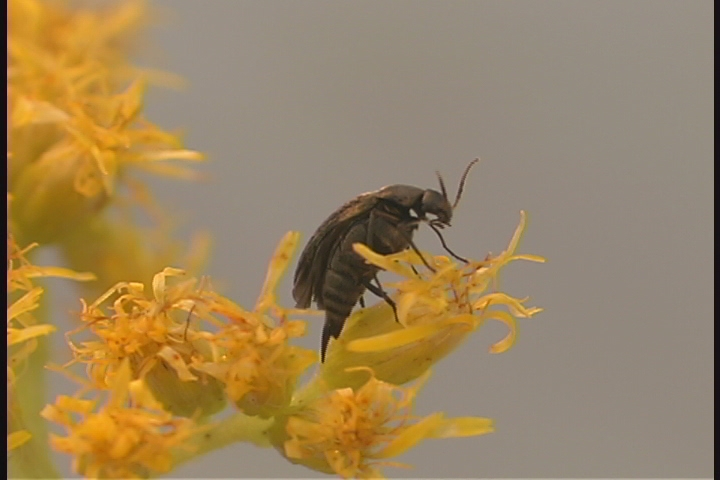
Here an adult Mordellistena beetle is shown feeding on goldenrod pollen. Normally, Mordellistena would not be seen feeding on goldenrod pollen, because the adult beetles are active in late spring to mid-summer.